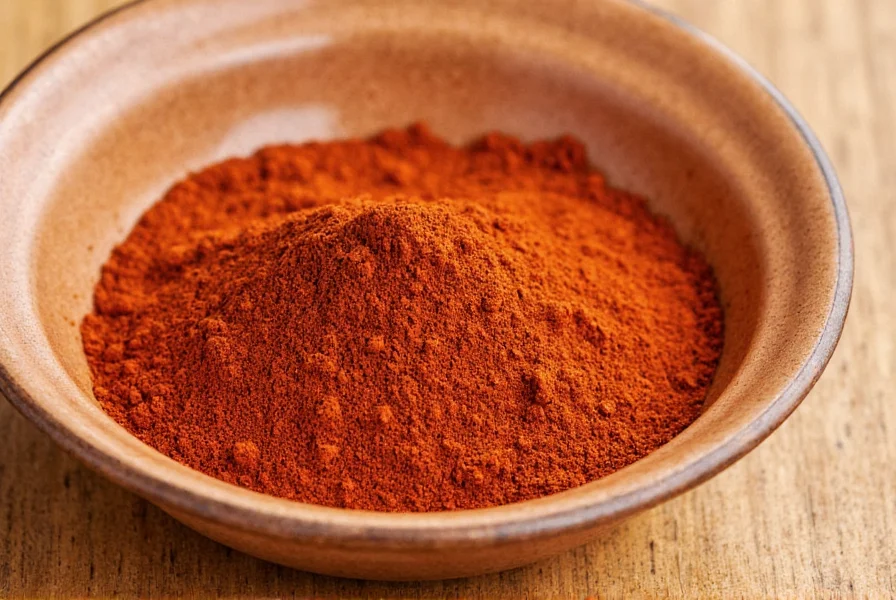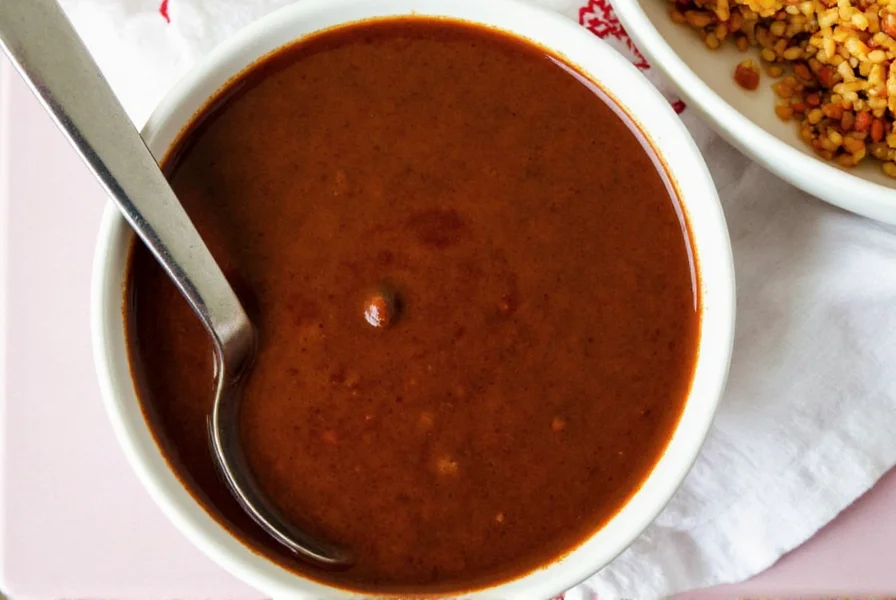Table of Contents
Introduction to Mole Sauce
Mole sauce is made from a blend of dried chiles, chocolate, spices, nuts, seeds, and other aromatics. This complex Mexican sauce typically contains 20-30 ingredients that create its signature rich, balanced flavor. Common components include ancho chiles, cinnamon, cumin, almonds, sesame seeds, and dark chocolate.

The Mole Mystery: What Is in Mole Sauce?
Mole sauce (from the Nahuatl word *molli*, meaning "to mix") combines multiple ingredients into a single harmonious flavor. While recipes vary by region, all authentic mole sauces share core components: dried chiles for heat and depth, spices for warmth, chocolate for subtle sweetness, nuts or seeds for richness, and tomatoes or tomatillos for acidity. The magic lies in toasting and blending these elements to create a sauce greater than the sum of its parts.

Common Ingredients in Mole Sauce
Every mole sauce features a foundation of these key ingredients:
- Dried chiles: Ancho, mulato, and pasilla provide earthy heat and depth.
- Spices: Cinnamon, cumin, cloves, and black pepper add warmth and complexity.
- Chocolate: Unsweetened dark chocolate or Mexican chocolate balances spice with subtle sweetness.
- Nuts and seeds: Almonds, peanuts, or sesame seeds contribute texture and richness.
- Tomatoes or tomatillos: Add acidity and body to most varieties.
- Aromatics: Garlic, onions, and epazote enhance overall flavor profile.
Traditional mole sauces often include 20-30 ingredients, though simplified versions may use 10-15 while maintaining authenticity.
Different Types of Mole Sauce
| Mole Type | Key Ingredients | Flavor Profile |
|---|---|---|
| Mole Poblano | Ancho chiles, chocolate, cinnamon, almonds, tomatoes | Rich, slightly sweet, smoky undertone |
| Mole Negro | Dried chiles, chocolate, tomatoes, sesame seeds, cloves | Deep, bold, intensely savory |
| Mole Verde | Green chiles, tomatillos, cilantro, avocado | Fresh, herbaceous, tangy |
| Mole Coloradito | Red chiles, tomatoes, almonds, cinnamon | Spicy, acidic, vibrant |
| Mole Amarillo | Yellow chiles, potatoes, onions, garlic | Lighter, milder, creamy |
Frequently Asked Questions About Mole Sauce
What is mole sauce made of?
Mole sauce is made from a blend of 20-30 ingredients including dried chiles (ancho, mulato, pasilla), spices (cinnamon, cumin, cloves), chocolate, nuts or seeds (almonds, sesame), tomatoes or tomatillos, and aromatics like garlic and onions. The ingredients are toasted, ground, and simmered to create a complex, balanced flavor profile unique to Mexican cuisine.
Does mole sauce actually contain chocolate?
Yes, most traditional mole sauces like Mole Poblano and Mole Negro contain unsweetened dark chocolate or Mexican chocolate (which often includes cinnamon). The chocolate is used in small amounts to balance heat from chiles and add depth—not sweetness. It does not make mole taste like dessert but contributes to its signature rich, layered flavor.
How many ingredients are typically in mole sauce?
Traditional mole sauces typically contain 20-30 ingredients, though simplified versions may use 10-15. The most complex varieties, like Mole Negro, often include over 25 components. Modern home recipes might reduce ingredients while preserving core flavors, but authentic mole requires multiple elements to achieve its distinctive profile.
What gives mole sauce its distinctive flavor?
Mole's distinctive flavor comes from balancing multiple elements: the earthiness of dried chiles, warmth of spices, richness of nuts, subtle sweetness of chocolate, and acidity from tomatoes or tomatillos. Toasting ingredients before blending releases deep flavors, while slow simmering allows them to meld into a harmonious whole. This creates a complex profile with sweet, savory, spicy, and bitter notes that define authentic mole.
Is mole sauce spicy?
Mole sauce has mild to moderate heat, not intense spiciness. Dried chiles provide warmth, but chocolate, nuts, and spices temper the heat. Mole Poblano is typically milder, while Mole Coloradito is spicier. The overall experience is rich and balanced—not fiery—making it approachable for most palates.
What's the difference between mole and other Mexican sauces?
Mole differs from sauces like salsa or adobo through its complexity and ingredient count. While salsa typically uses 3-5 fresh ingredients (tomatoes, chiles, onions), mole combines 20+ ingredients including multiple chiles, spices, chocolate, nuts, and seeds. Mole is simmered for hours to develop depth, resulting in a thick, rich sauce unlike the bright, fresh profiles of other Mexican sauces. The name "mole" (from "molli") reflects its nature as a blended sauce.
Cooking Tips for Making Mole
Follow these expert tips for authentic mole at home:
- Toast ingredients: Dry-toast chiles, spices, and nuts before soaking or blending to enhance flavor depth.
- Use authentic chocolate: Mexican chocolate (like Abuelita) with cinnamon and almonds adds traditional notes.
- Simmer slowly: Cook for 1-2 hours on low heat to meld flavors without burning.
- Add chocolate last: Stir in chocolate during the final 10 minutes to preserve its delicate flavor.
- Adjust consistency: Thicken with masa harina or thin with broth as needed for perfect texture.
Buying Guide: Choosing the Best Mole Sauce
For convenient authentic mole, look for these trusted brands:
Top Brands and Products
- Dona Maria Mole Paste
- Features: Traditional recipe with chiles, cacao, and spices
- Advantages: Smooth texture and authentic flavor profile
- Use Cases: Enchiladas, tacos, and grilled meats
- Target Audience: Home cooks and Mexican food enthusiasts
- Suitable Occasions: Weeknight dinners, family gatherings, and festive celebrations
- La Costeña Mole Sauce
- Features: Ready-to-use sauce with balanced heat and depth
- Advantages: Consistent quality and easy preparation
- Use Cases: Quick meals and everyday cooking
- Target Audience: Busy professionals and casual cooks
- Suitable Occasions: Lunch, dinner, and impromptu meals
- Goya Mole Paste
- Features: Concentrated paste with Oaxacan-inspired recipe
- Advantages: Versatile for soups, stews, and sauces
- Use Cases: Special events and holiday meals
- Target Audience: Chefs and serious home cooks
- Suitable Occasions: Dinner parties and celebrations
When purchasing mole sauce, prioritize products with natural ingredients and minimal preservatives. Look for regional authenticity (e.g., "Oaxacan" or "Poblano") and check for chocolate as a key ingredient.

Conclusion
Mole sauce is a masterpiece of Mexican cuisine, blending chiles, chocolate, spices, nuts, and seeds into a complex yet balanced flavor. Whether homemade or store-bought, authentic mole showcases the art of layering ingredients to create something greater than its parts. With the right ingredients and techniques, you can bring this iconic sauce to your kitchen for unforgettable dishes.










 浙公网安备
33010002000092号
浙公网安备
33010002000092号 浙B2-20120091-4
浙B2-20120091-4